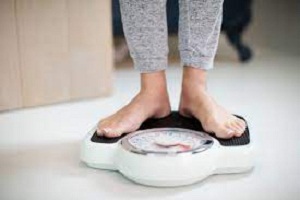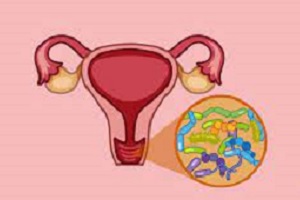By Setareh Kiumarsi
Which foods should I eliminate from my diet?
Obesity and excess weight usually stem from a sluggish metabolism, Kapha imbalance, and the buildup of bad phlegm in the body (though in some individuals, weight gain is the result of more complex multi-dosha imbalances).
The first step toward weight loss is to approach two categories of food with care and proper dietary etiquette.
The first group includes those delicious, anabolic, fattening foods we all love—like what? Sweets, desserts, ice cream, pizza, lasagna, pasta, cheesecake, cream puffs, cheeseburgers, and more.
What do all these crave-worthy foods have in common? They’re made from heavy, phlegm-producing, moist, hard-to-digest ingredients that overwhelm the digestive system. A large portion of them remains undigested, forming layers of phlegm and kilos of extra weight.
Which foods are highly phlegm-producing and should be completely cut from your diet if you want to lose weight?
White flour. Eliminate anything made with white flour (e.g. baguettes, white toast, pastries, cakes, biscuits, pasta, lasagna, etc.).
Only eat products made with whole grain or gluten-free flour. (If you live in a country where gluten-free options are widely available, switching to a gluten-free diet can have incredible results for weight loss.)
Other foods to eliminate:
Cheese, cream, clotted cream, and ice cream; remove them entirely. Only consume yogurt in the form of digestive lassi. Instead of cow’s milk, opt for camel’s milk, goat’s milk, or plant-based milks like almond or coconut milk.
Avoid beef and veal. Instead, eat more lean poultry such as quail, turkey, and ostrich.
Stay away from sugar and sugary products (cakes, cookies, desserts, pastries). Instead, go for snacks made from whole grain/gluten-free flour and natural sweeteners like stevia, mulberry syrup, grape syrup, or maple syrup.
Don’t eat plain and sticky rice; always make it strained and flavored with spices or herbs (see the article on Rice in Ayurvedic Nutrition).
If you have access to gluten-free products, following a gluten-free diet can work wonders for weight loss.
The following foods are great for gaining weight — so limit your intake if your goal is to slim down:
Dates, figs, bananas, grapes, avocado, lamb, peanuts, cashews, date syrup.
Constipation: the enemy of weight loss
Did you know constipation is a major factor in weight gain for many people? Why?
Because regular bowel movements are a key way your body eliminates bad or undigested phlegm and toxins. When that elimination doesn’t happen daily, phlegm accumulates and leads to excess weight.
What to do?
Read articles on Ayurvedic home remedies for constipation and What causes constipation.
Every morning on an empty stomach, take this mix:
The night before, in half a glass of boiling water, combine 3 tsp teffseeds + a few dried apricots. Let it steep overnight. In the morning, add another half-glass of hot water, a few drops of lemon juice, and 1 tsp honey.
Take this mixture along with 1/2 tsp black Haritaki mixed with a little honey. You can also place the Haritaki or Triphala powder into empty capsules instead of mixing with honey — take 2 capsules.
If you’re living outside Iran, look for Haritaki and Triphala under those names.
Weight Loss Myths
“If I eat lots of lettuce salad, I’ll lose weight!”
“I basically only eat lettuce salad and almost nothing else — so why am I not losing weight? In fact, why am I gaining?”
Here’s why: lettuce has a cold energy, and so do cucumber and tomato — the standard trio in most salads. These slow your metabolism. Eating lettuce salad with every meal is like pouring a glass of cold water on your digestive fire. But for weight loss, you need to fuel that fire so it can burn off fat and bad phlegm!
Salads made with cold vegetables (lettuce, cabbage, cauliflower, broccoli, Brussels sprouts, celery, cilantro, mung bean sprouts, kale, endive) not only don’t help with weight loss, they can slow metabolism and actually lead to weight gain over time.
Instead, make salads with warm-natured vegetables like carrot, parsley, spinach, basil, bell pepper, and arugula — such as the digestive salad (see the articles on Digestive Salad, Fat-Burning Salad, Phlegm-Reducing Digestive Salads 1, 2 & 3).
Sweating & Weight Loss
Did you know that one of the ways the body expels toxins and bad phlegm is through sweat?
Many people struggling with excess weight say they don’t sweat much — even with exercise! Why? Because toxins, undigested phlegm, and fat have built up under the skin, blocking the pores and preventing detox through perspiration.
What to do?
2–3 times a week, exfoliate your skin in the bath. This clears away dead skin and opens up clogged pores, allowing your body to start detoxing again through sweat.
More tips:
Massage your body with black seed oil or mustard oil (see Morning Rituals: Part 5 for massage guidelines). After the massage, fill the bathtub with water, add 1/3 cup ginger powder and 1/3 cup baking soda, and soak for 10–20 minutes to sweat it out. Do this 1–2 times per week.
If you have high blood pressure or skin sensitivities, use castor oil for the massage instead, and swap the ginger powder for 1/3 cup chamomile or lavender powder.
The Golden Rule of Weight Loss
As I explained in the previous article, weight gain and obesity are usually caused by slow metabolism, a Kapha imbalance, and the accumulation of bad phlegm in the body (though in some people, weight gain can result from more complex multi-dosha imbalances).
Bad phlegm is a moist and heavy substance. To break it down, there’s one golden rule:
Always combine moist, phlegm-inducing, fattening foods (like rice, bread, animal proteins, sweet fruits, sweets, etc.) with fiber-rich, catabolic, or drying foods (like salads, fresh herbs, or cooked apple — see the article on apple modifiers). Why?
Because fiber-rich and drying foods act like porous sponges. Imagine tossing a sponge into a bowl of water… When you eat heavy, anabolic foods alongside fiber-rich drying ones, the fiber absorbs excess moisture, helps digestion, and prevents the buildup of undigested bad phlegm in the gut.
(For salad recipes, see the articles: Digestive Salad, Fat-Burning Salad, Phlegm-Reducing Digestive Salads 1, 2 & 3.)
In the rest of the article, I’ll explain how to combine moist and drying foods at each meal to support weight loss.
Lose Weight with Just 20 Minutes of Running
Want to lose weight? Run for 15–20 minutes daily, or go for a brisk 45-minute walk. Why?
Running triggers several important processes:
First, you sweat — and with that sweat, bad phlegm, fat, and toxins leave your body.
Ever noticed how runners often need to spit or clear mucus from their throat? That’s because running helps expel built-up phlegm from the lungs and upper body through the nose and throat.
Also, think about the mechanics: each step moves half your body forward, alternating sides; this contraction and expansion activates the abdominal cavity where your stomach, intestines, liver, pancreas, spleen, etc., are located. This stimulates the secretion of bile, digestive enzymes, and juices!
Plus, it promotes proper downward movement of food in the gut, boosts intestinal peristalsis, and optimizes digestion. Proper digestion prevents undigested phlegm from becoming stored fat; so weight loss speeds up naturally.
I Want to Lose Weight… What Should I Eat for Breakfast?
Wake up early (ideally around 6 a.m. to support metabolism — see the article on waking times). First thing: ignite your digestive fire with a morning tonic:
– If you have constipation, take the laxative mixture recommended in Weight Loss (Part 1).
– If your digestion is normal:
1 large glass of warm water + a few drops of lemon juice + 1 tsp honey + 1 pinch of salt.
– If your stool tends to be loose:
To the above, add 1/4 tsp ground cardamom and a pinch of nutmeg.
So what to eat for breakfast?
Avoid heavy, fattening foods: dairy (milk, cheese, cream, yogurt), white bread, milk with cornflakes, peanut butter, and greasy omelets; these all promote weight gain. If you’re serious about losing weight, skip them (see What to Eat for Breakfast for more info).
If you’re not super hungry in the morning:
Have a detox smoothie or a bowl of stewed apple with tahini, honey, and soaked, peeled almonds, alongside a cup of digestive tea.
If you’re very hungry:
Add a small slice of whole-grain or gluten-free bread with your apple dish. For more variety, see What to Eat for Breakfast (Part 1 & 2).
Sun Salutation & Weight Loss
Want to exercise but full of excuses? No time for the gym? Air pollution keeping you indoors? Not in the mood for intense workouts?
Did you know the yoga sequence “Sun Salutation” (Surya Namaskar) is highly effective for increasing metabolism, supporting digestion, burning fat, and promoting weight loss?
This is because these poses cause powerful contraction and expansion of abdominal muscles, stimulating bile, digestive juices, and downward food movement. Digestion improves, and bad or undigested phlegm doesn’t form.
So every morning after waking (after your morning rituals), do 6 to 12 rounds of Sun Salutation. It only takes about 10 minutes. You can repeat it 2–3 hours after lunch as well.
It’s best to learn Sun Salutation from a yoga instructor, but if you don’t have access to one, search “Sun Salutation”, “Surya Namaskar” on YouTube for many instructional videos.
I Want to Lose Weight… What Should I Eat for a Morning Snack?
In this article, we’ve already covered breakfast in detail. Starting two hours after breakfast, drink one glass of digestive tea every hour. Why? It keeps your digestive fire strong, supports digestion, and prevents the formation of undigested bad phlegm (which turns into fat).
If you had breakfast around 6–7 a.m. and feel hungry around 10, try one of these snacks:
– A bowl of fruit salad or 1–2 fruits (like a persimmon with a sweet lemon), plus a bowl of stewed apple
– One glass of carrot juice
– A non-dairy Ojas drink
– 10 soaked and peeled almonds + 1 tsp honey + a pinch of cardamom + a pinch of rose petals + 1 cup of digestive tea
Avoid cakes and biscuits as your morning snack.
If you’re not hungry, don’t force yourself to eat. Save your hunger for lunch and sip on a glass of digestive tea or warm water with lemon and honey instead.
Think about your lunch plate… Usually, it’s 15–20 spoonfuls of rice with a big piece of meat, chicken, or fish. Then we add a few spoonfuls of yogurt on the side and maybe a piece of bread to really feel full… And finally, a sweet to “wash it all down”!
Before we get into what should be on your lunch plate, let’s talk about some general weight-loss principles:
Don’t overeat. Put your two hands together to form a bowl; this is the actual size of your stomach. Everything you eat for lunch (including salad and extras) should fit in one regular plate. Eat slowly. Use a small spoon (like a teaspoon) instead of a large one so you chew thoroughly before swallowing. (See the post on overeating and proper eating etiquette.)
Don’t combine rice, bread, and potatoes in the same meal—they’re a very fattening combo.
If your meal includes meat, chicken, fish, or eggs, absolutely avoid eating yogurt or cheese with it. Also avoid foods that contain milk or cream. Dairy is extremely sticky and phlegm-producing, and combining it with meats is toxic, hard to digest, and fattening.
Don’t drink cold water, soda, or thick salty yogurt drinks with meals. Remember, drinking regular yogurt drink with food harms digestion. But digestive lassi acts like a digestive tonic and helps the process. (See recipe for digestive lassi.)
Don’t eat dessert right after meals… doing so will flood your digestive system with harmful phlegm. (Read the post about the right time and way to eat dessert.)
According to Ayurveda, when the sun is at its highest point in the sky, our digestive fire is at its peak. So the main meal of the day should be eaten between 11 a.m. and 1 p.m. After 2 p.m., the digestive fire significantly weakens, and it becomes harder for the body to process heavy meals.
In the next section, we’ll talk about what should be on your lunch plate.
________________________________________
I want to lose weight… What should I eat for lunch?
In the previous section, we talked about general rules for weight loss. Now let’s talk about what should be on your lunch plate.
About 30% of your plate should be rice (maximum 4–5 spoonfuls) or bread (maximum the size of your palm). Make sure the rice is strained (cooked and drained) and seasoned with digestive spices. (See the post on rice from the perspective of Ayurveda.) If you choose bread, go for whole grain, multi-grain, or gluten-free options.
About 20% should be protein (roughly the size of half your palm). For example, 1/3 of a chicken breast or 2–3 stew-size pieces of meat. If you’re vegetarian, this can be a veggie stew with a small cube of cheese, or 2 tablespoons of yogurt, or 10 soaked and peeled almonds or pistachios.
About 50% of your plate should be filled with fiber-rich foods like digestive salad (see various recipes under Digestive Salad, Fat-burning Salad, and Phlegm-cleansing Digestive Salads 1, 2, 3), or fresh herbs (like parsley and basil), or lightly sautéed or steamed vegetables.
If you’re eating fresh herbs, season them with some lemon juice, olive oil, salt, and thyme.
If you’re eating cooked vegetables, make sure to balance warm and cool types. (See the post “Vegetarian Etiquette 1.”)
Have a glass of digestive lassi with your meal.
If you still crave something sweet after eating, try 5–10 soaked and peeled almonds with 1–2 teaspoons honey, 2 pinches of cardamom, and 1 pinch of rose petals.
Don’t forget to eat slowly, chew thoroughly, and enjoy your meal!
In the next post, I’ll talk about the afternoon snack in a weight-loss routine.
________________________________________
I want to lose weight… What should I have for an afternoon snack?
In the previous posts on this page, I talked about breakfast, mid-morning snack, and lunch in detail. Starting two hours after your main meal, drink a glass of digestive tea every hour…
Let’s say you had lunch around 12–1 p.m. If you feel hungry around 4–5 p.m., choose one of these snacks:
– One wholegrain biscuit or slice of bran cake with a glass of digestive tea
– A bowl of fruit salad or 1–2 fruits (for example, a persimmon or tangerine with a sweet lemon) or a bowl of cooked apples
– 10 soaked and peeled almonds + 1 teaspoon honey + a pinch of cardamom + a pinch of rose petals + a cup of digestive tea
If you don’t feel hungry, try one of these phlegm-cleansing snacks instead:
– A glass of carrot juice
– A glass of vegetable smoothie
– Grated carrot + 2 pinches of cardamom + 1 pinch of rose petals + 1–2 teaspoons honey
– A bowl of cooked apples
– Digestive tea or warm lemon-honey water
In the next section, we’ll talk about what to eat for dinner.
________________________________________
I want to lose weight… What should I eat for dinner?
In the previous posts, I discussed breakfast, mid-morning snack, lunch, and afternoon snack in detail.
There are two important rules for dinner:
1. Eat early. Around 6 p.m., no later than 7. Why? If you eat late and go to bed soon after, your body lies down, digestion slows, and your system produces excess phlegm and fat. (See the post “Can You Nap in the Middle of the Day?”)
2. Keep carbs low or zero. No rice, pasta, or bread at dinner. Instead, fill your plate with high-fiber vegetables. Why? Because vegetable fiber acts like a sponge—it absorbs and digests the undigested phlegm that built up in your digestive system during the day.
So what should you eat?
Choose one of the following dinner options:
– A bowl of digestive salad (see the recipes under Digestive Salad, Fat-burning Salad, Phlegm-cleansing Digestive Salads 1, 2, 3).
If you’re vegetarian, add a small portion of nuts (e.g. 10 soaked and peeled almonds, 10 pistachios, 1 tablespoon pumpkin or sunflower seeds) and 2 tablespoons cooked quinoa.
If not vegetarian, add a bit of animal protein (chicken, turkey, a boiled egg, etc.).
Have this with a glass of digestive lassi.
– A bowl of vegetable soup or stew. Aim for 70% vegetables (warm to cool veggie ratio 3:1—see the post “Vegetarian Etiquette 1”), and 30% protein and light grains (like quinoa, oats, buckwheat, bulgur, or a little rice).
– Half a palm-size serving of animal protein + steamed or grilled vegetables + a glass of digestive lassi.
If you ate dinner early and feel hungry before bed, have a glass of warm spiced milk with honey.
If you’re not hungry before bed, drink a glass of digestive lassi—it’ll help your digestion and give you deeper sleep.
If you republish this post, which was written with care and in the hope of well-being for all, please credit the author “Setareh Kiumarsi.”







